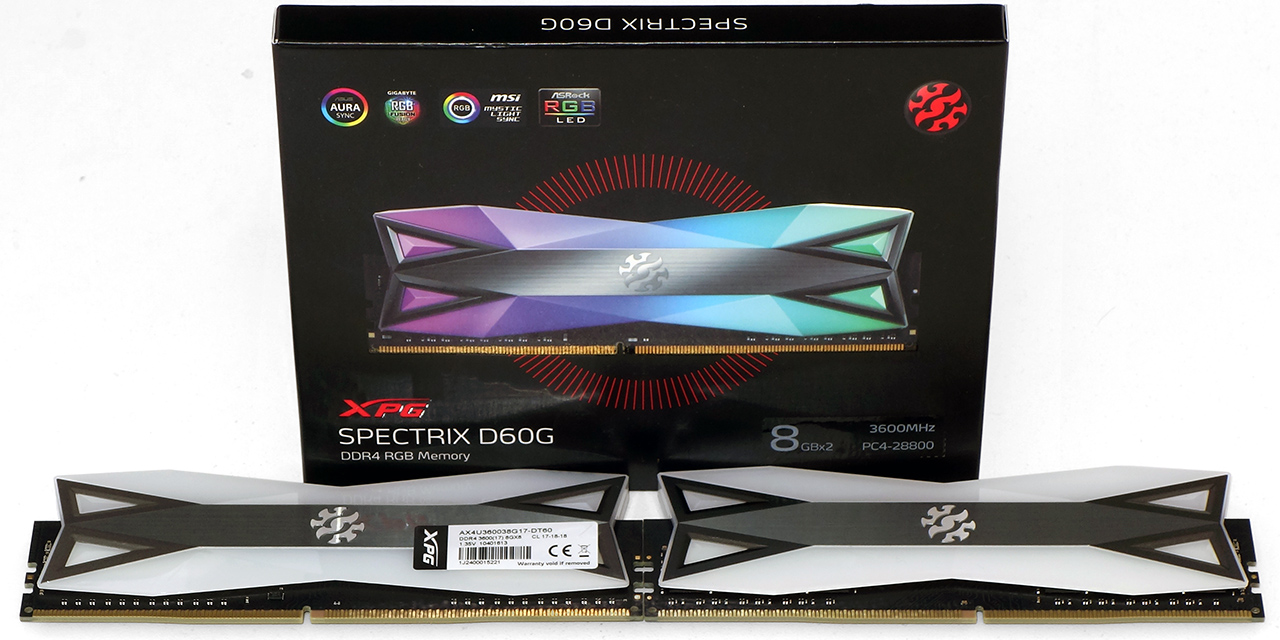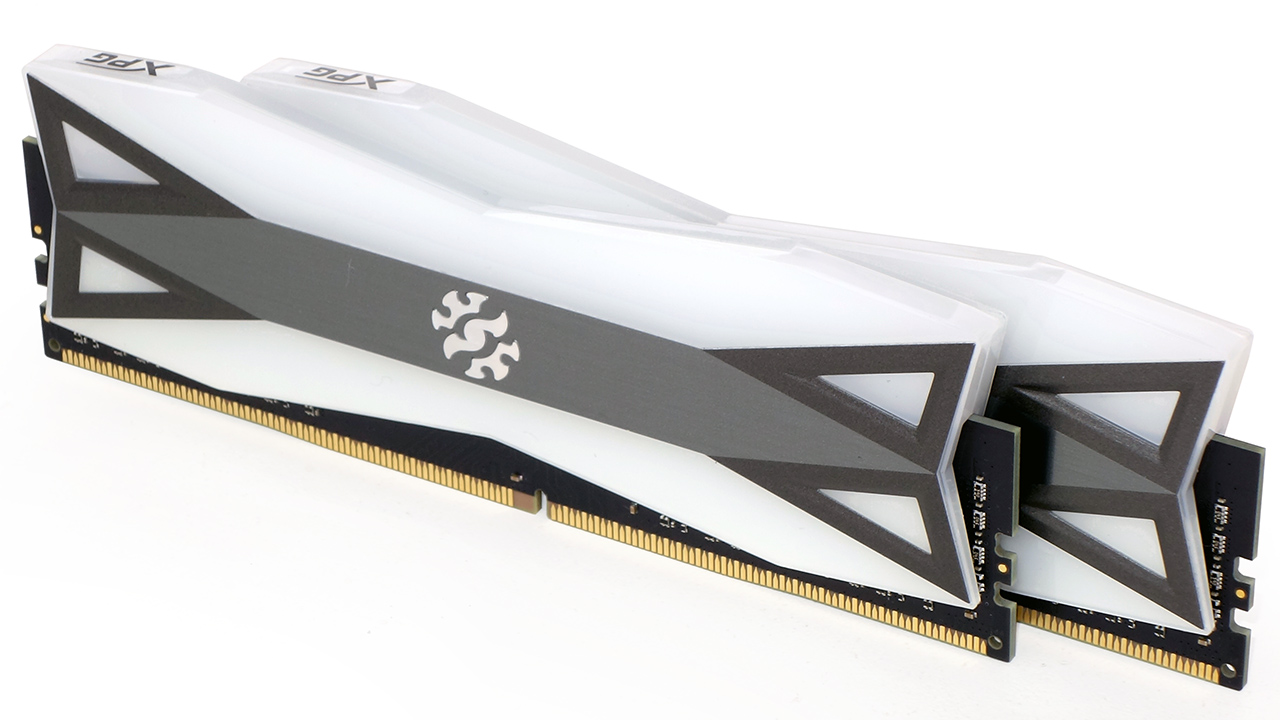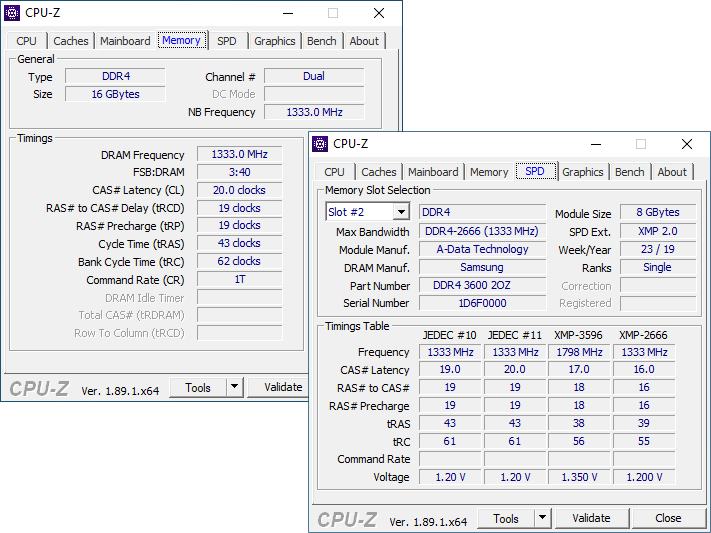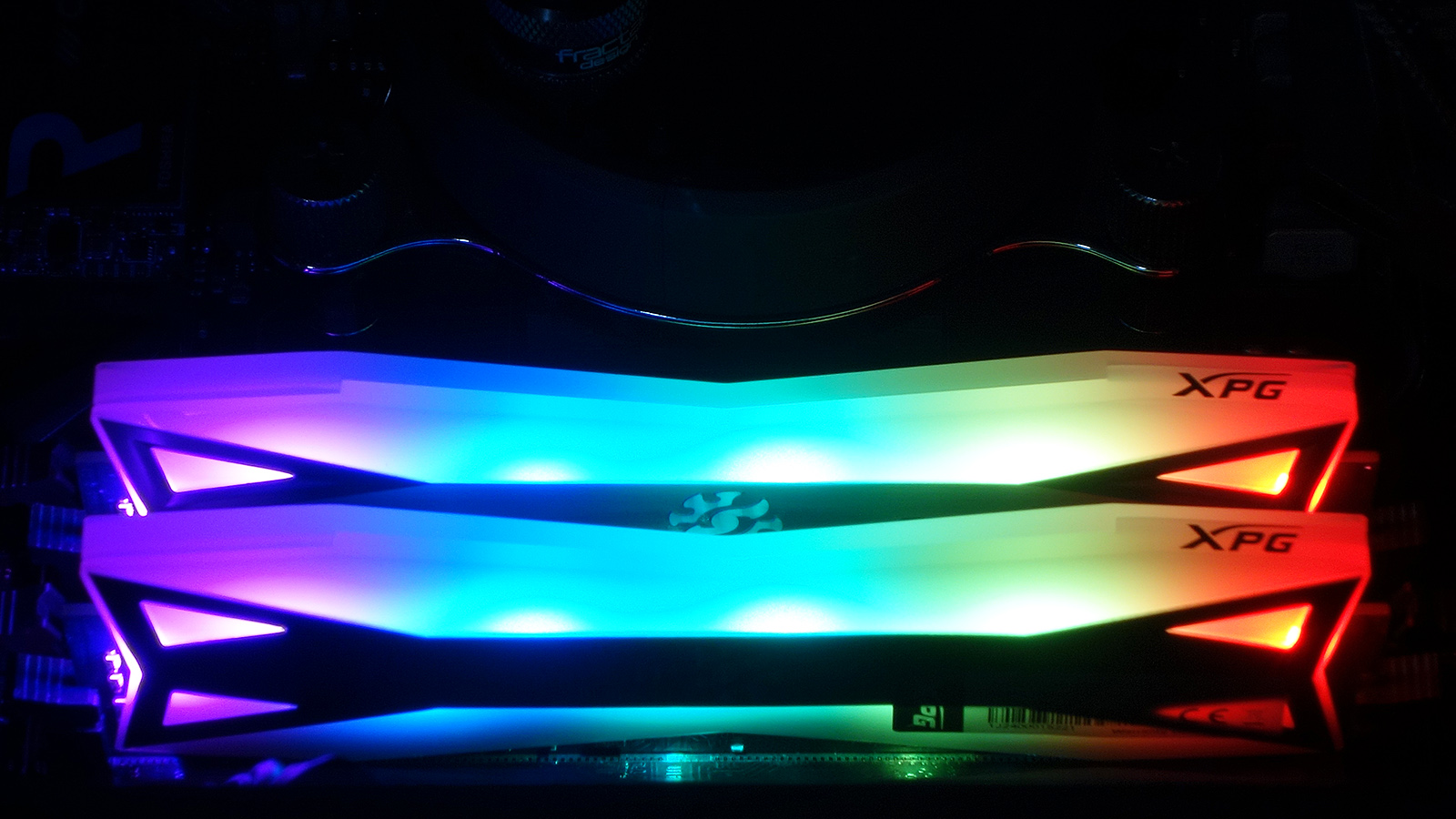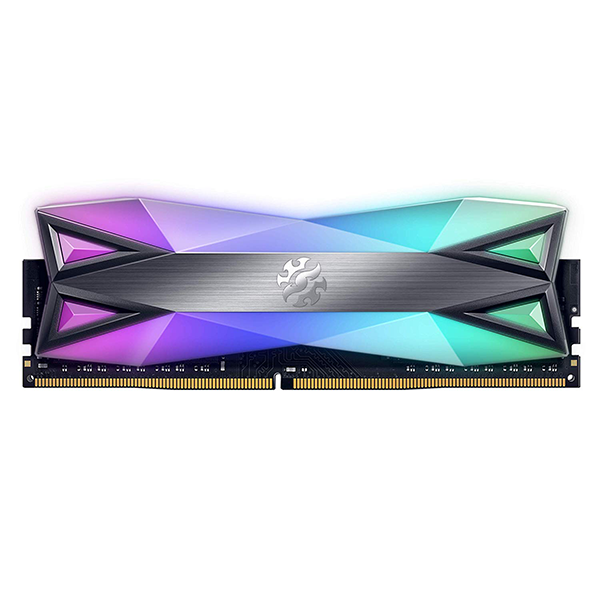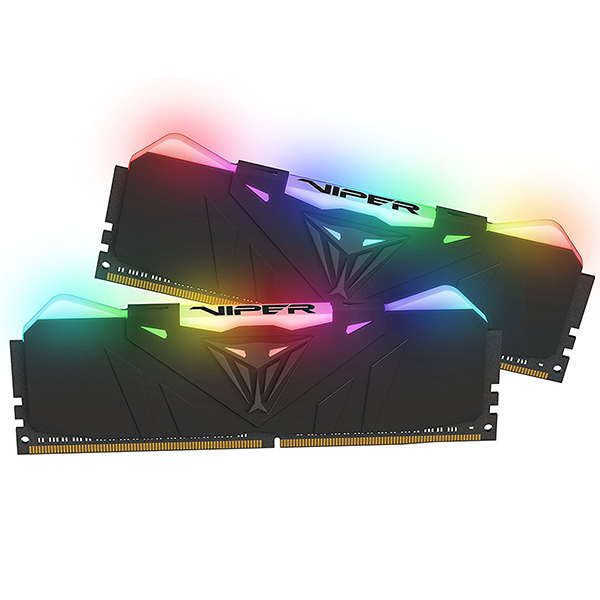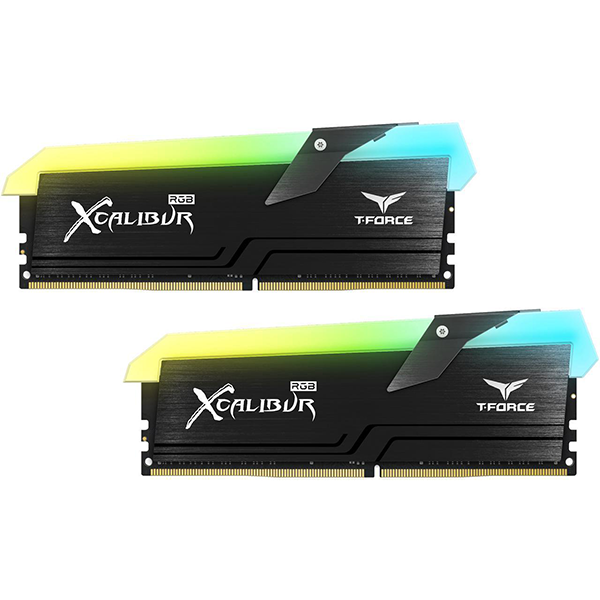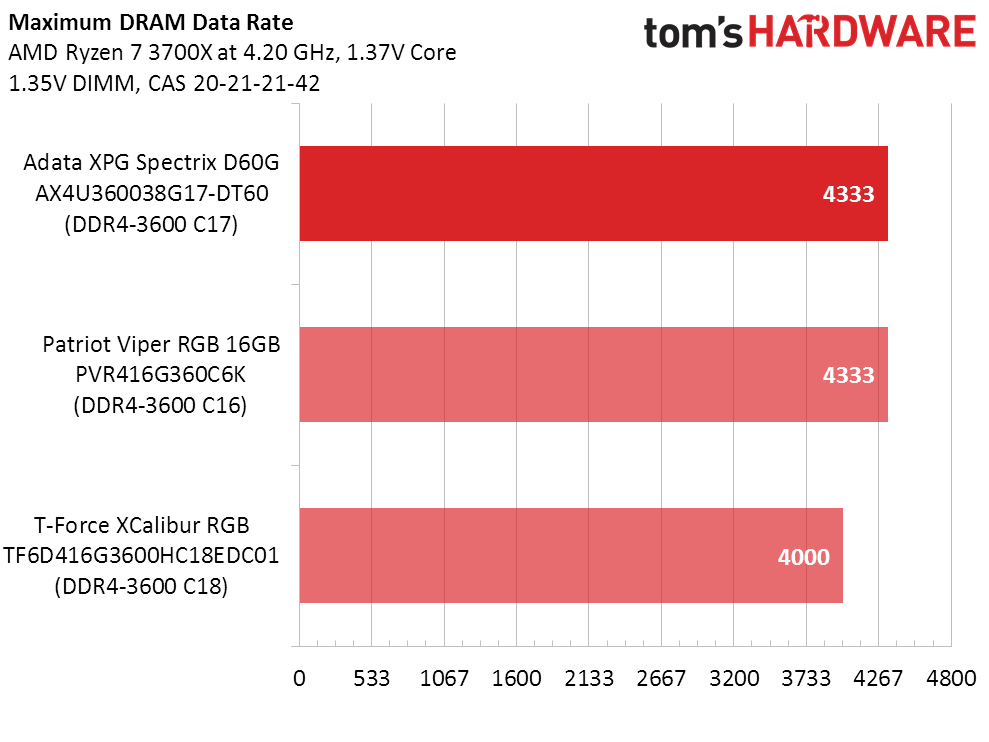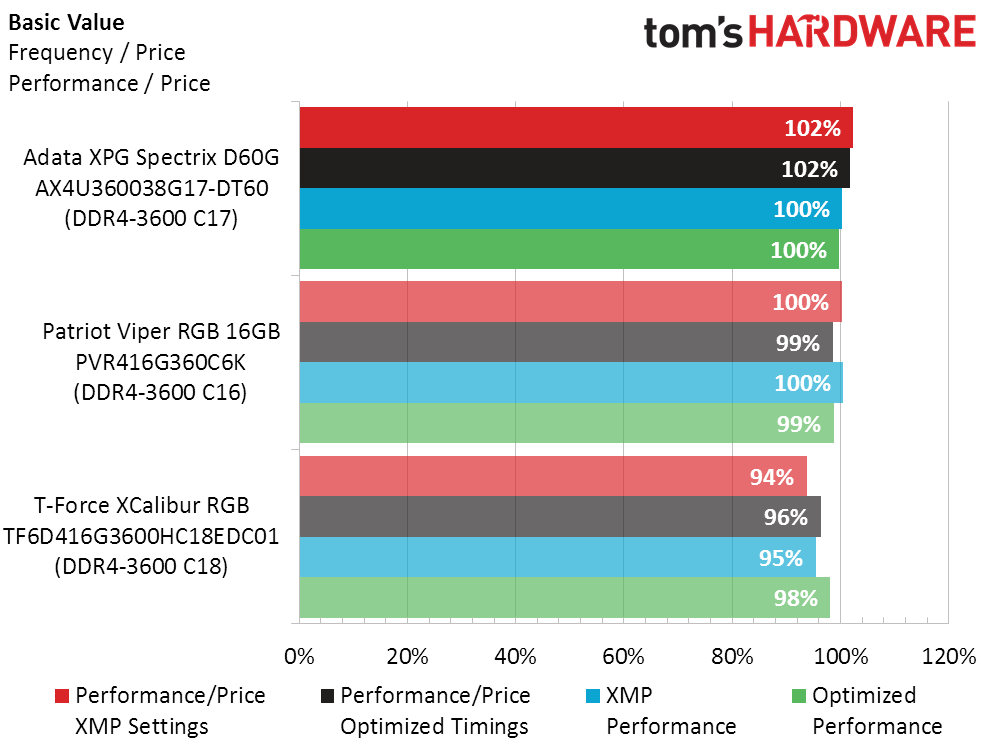Tom's Hardware Verdict
Users who just want the widened light diffusers can find them on cheaper models of Spectrix D60G, but those who also want top performance do well to consider the winning nature of this P/N AX4U360038G17-DT60 DDR4-3600 kit.
Pros
- +
Great Performance
- +
Excellent overclocking capability
- +
Excellent low-latency capability (for tuners)
- +
Secondary XMP broadens compatibility
Cons
- -
Trying to convince others that plastic heat spreaders are adequate
Why you can trust Tom's Hardware
One of the more delightful developments over the past year (at least for this memory reviewer) is the broadening of high date-rate memory support. Those developments almost perfectly folded into memory price drops that put DDR4-3600 within reach of most performance enthusiasts. But what if you’re an enthusiast who likes to show off? Don’t the showiest parts usually have second- or third-tier performance? Adata thinks its customers should have both show and go, at a moderate price. And who’s going to argue with that?
Features
Covering the full spectrum of the mid-budget enthusiast market, Adata sent the DDR4-3600 version of its XPG Spectrix D60G as a follow-up to our DDR3-3000 review. The circuit boards, RGB LEDs (five per side), and full-coverage light diffuser with decorative aluminum strip remain, but this is the first time we’re noting that the light diffuser is the heat spreader for this model. The mediocre thermal properties of plastic probably prove that the DRAM ICs underneath don’t need a heat spreader even at the upgraded data rate, though dense plastics such as the one Adata uses here tend to conduct heat better than softer formulas.
The DDR4-3600 version of Spectrix D60G is no slouch regarding timings, offering a CAS latency that’s less than one cycle for every 200 MHz of data rate. That puts its part number AX4U3200316G16-DR80 into our “Low Latency” category, since the elapsed time for each cycle shortens as frequency is increased.
Users who figure out after their purchase that their platform doesn’t support this speed (typically non-K Intel processors and/or its B/H series chipsets) are still welcomed with a DDR4-2666 C16 secondary profile, and even users whose motherboards don’t support XMP can use the included DDR4-2666 C19 or C20 setting. The reason for the mediocre XMP-2666 timings is that the profile is written for the DDR4 baseline 1.20V, and tweakable platforms that don’t support higher data rates can still be optimized manually by those who care to do so. It’s one of the data rates that we’ll be tuning.
While the white light diffusers used on this kit dictate that the color won’t be as rich as Adata's D80 kit, it does show nicely in dark rooms and shadowy case interiors. The brighter light needed to get a clear image unfortunately reflects off the white diffusers, to diminish a visual effect that our eyes can see better than our camera equipment.


While the downloadable XPG RGB software suite addressed our modules well, it couldn’t configure the memory to match our motherboard’s lighting. For that we needed to use the motherboard’s RGB software, which in turn required an update to work with the Spectrix D60G’s RGB controller. We found that the motherboard software couldn't synchronize scrolling patterns such as Rainbow, but did synchronize the timing of solid color flashing patterns. The XPG software includes a speed control, so users could potentially try to set the speed to match their motherboard, but the best reason to use it is that per-LED color patterns can be manually configured.
Comparison Hardware
To keep today’s comparison fair, we decided to use kits that had same data rate and number of ranks (for performance fairness), and that have similarly basic RGB (pricing fairness). Patriot's Viper RGB offers a slight advantage in timings at CAS 16, while Teamgroup's T-Force XCalibur RGB has slightly worse timings. That puts the XPG Spectrix D60G’s C17 in the middle.
Get Tom's Hardware's best news and in-depth reviews, straight to your inbox.
Class-beating memory overclocking capability forced us to select MSI’s X570 Ace with AMD’s Ryzen 7 3700X as our new test platform, complete with the 256GB Toshiba/OCZ RD400 and Gigabyte's RTX 2070.
Overclocking and Latency Reduction
Two of the comparison kits hit DDR4-4333 on our AMD Ryzen 3000-series platform, coming up just shy of the outstanding DDR4-4400 we reached with a DDR4-2933 kit during our motherboard review. Adata got us closest to that high mark, our test hitting the memory hard for over 40 minutes at DDR4-4400 before we saw our first error and were forced to back off to DDR4-4333.
| Lowest Stable Timings at 1.35V (Max) on MEG X570 ACE (BIOS 1.20) | ||||
| DDR4-4266 | DDR4-3733 | DDR4-3200 | DDR4-2666 | |
| Adata XPG Spectrix D60GAX4U360038G17-DT60(2x 8GB dual-rank) | 19-19-19-38 (2T) | 17-17-17-34 (1T) | 14-14-14-28 (1T) | 12-12-12-24 (1T) |
| Patriot Viper RGB 16GBPVR416G360C6K(2x 8GB dual-rank) | 19-19-19-38 (1T) | 17-17-17-34 (1T) | 14-14-14-28 (1T) | 12-12-12-24 (1T) |
| T-Force XCalibur RGBTF6D416G3600HC18EDC01(2x 8GB single-rank) | ✗ | 17-19-19-38 (1T) | 15-18-18-36 (1T) | 12-15-15-30 (1T) |
Memory resellers must have stockpiled quite a bit of Samsung’s B-Die, because we’re told that all three kits use these now-EOL parts. Adata and Patriot even reach the same ultra-low timings, though T-Force stands out for its inability to support that same level of latency reduction. Those CAS 12 optimized timings at 1.35V certainly beat the XPG Spectrix D60G’s DDR4-2666 C16 secondary XMP!
Benchmark Results
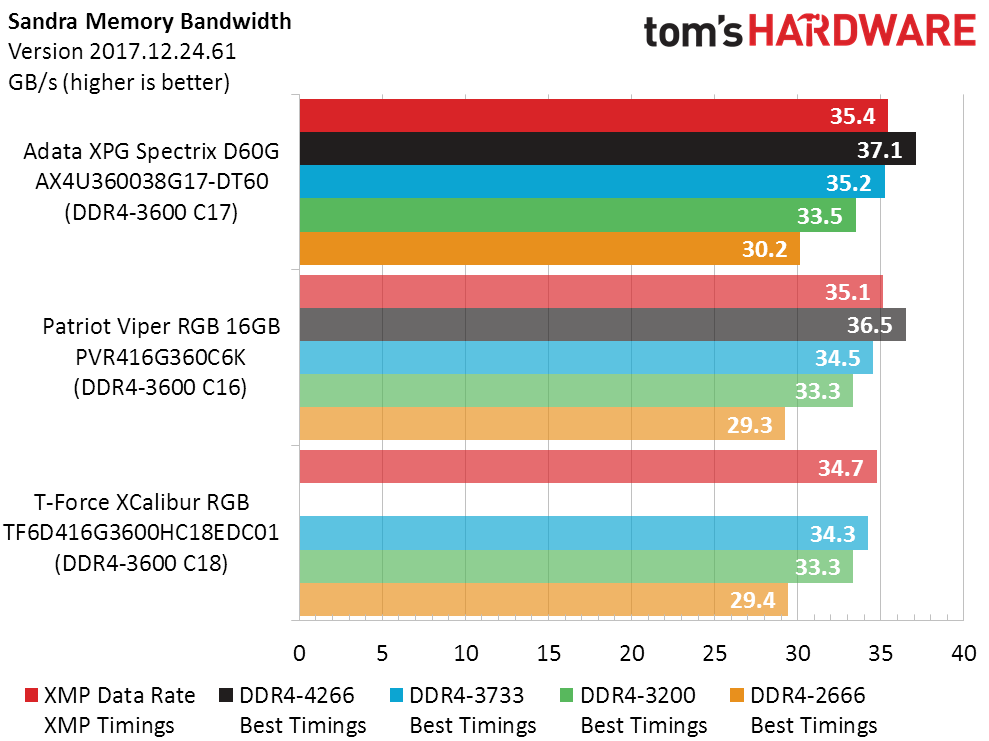

Adata outperforms Patriot in the Sandra Memory Bandwidth and even edges it out at most of the settings we used in Sandra Latency. We thought they’d be identical. Perhaps the small lead will be even smaller in real-world apps?
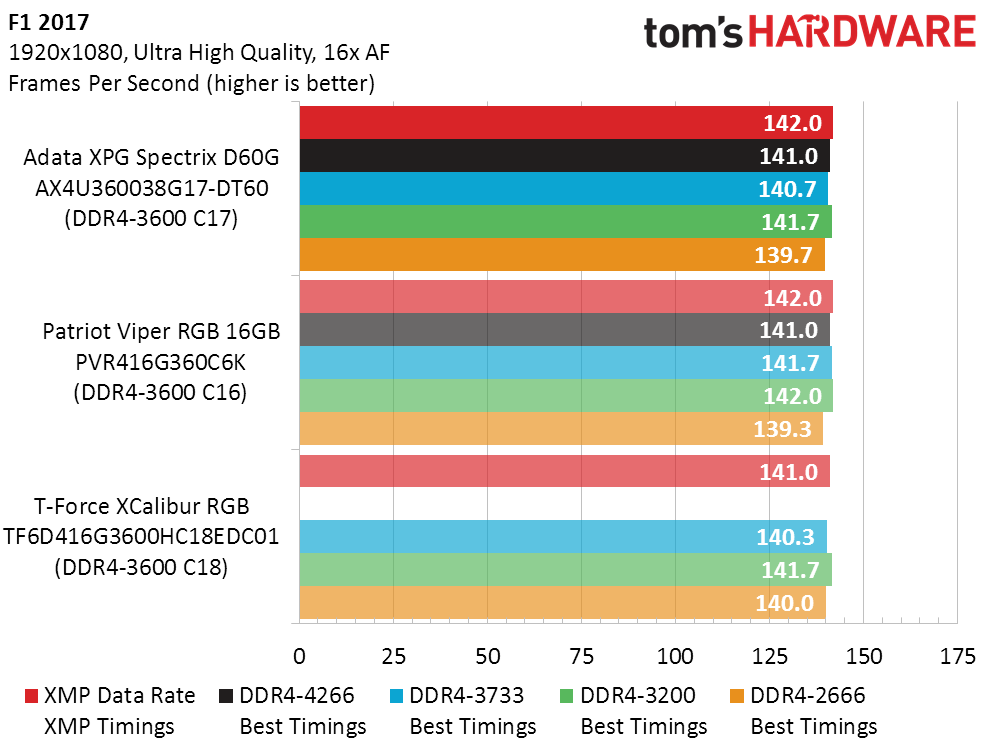
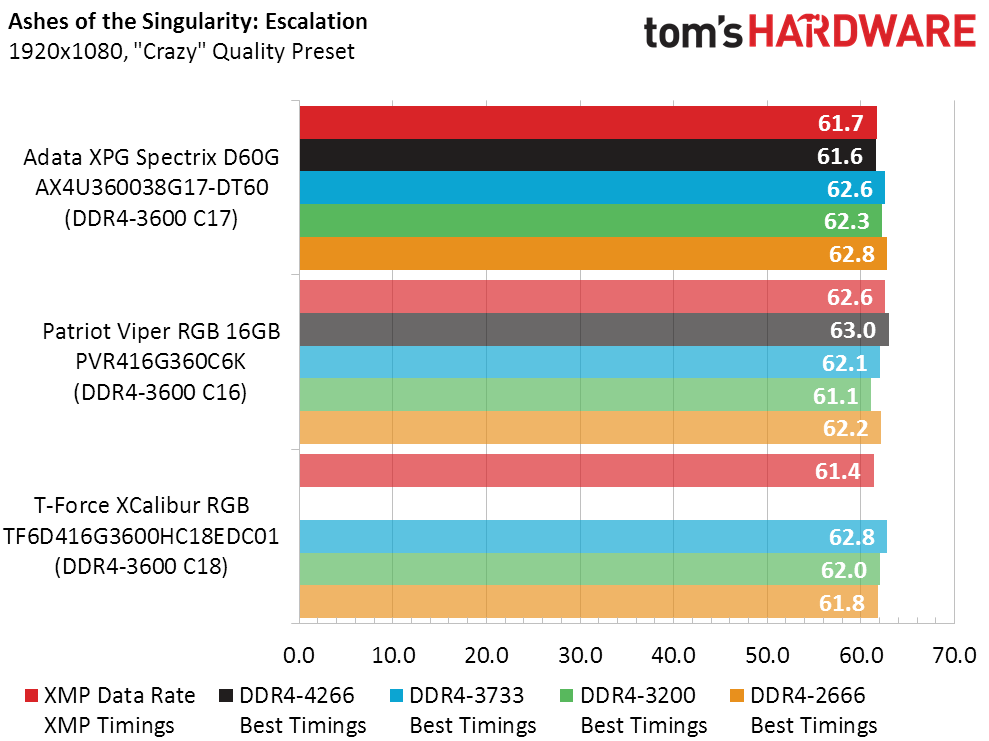
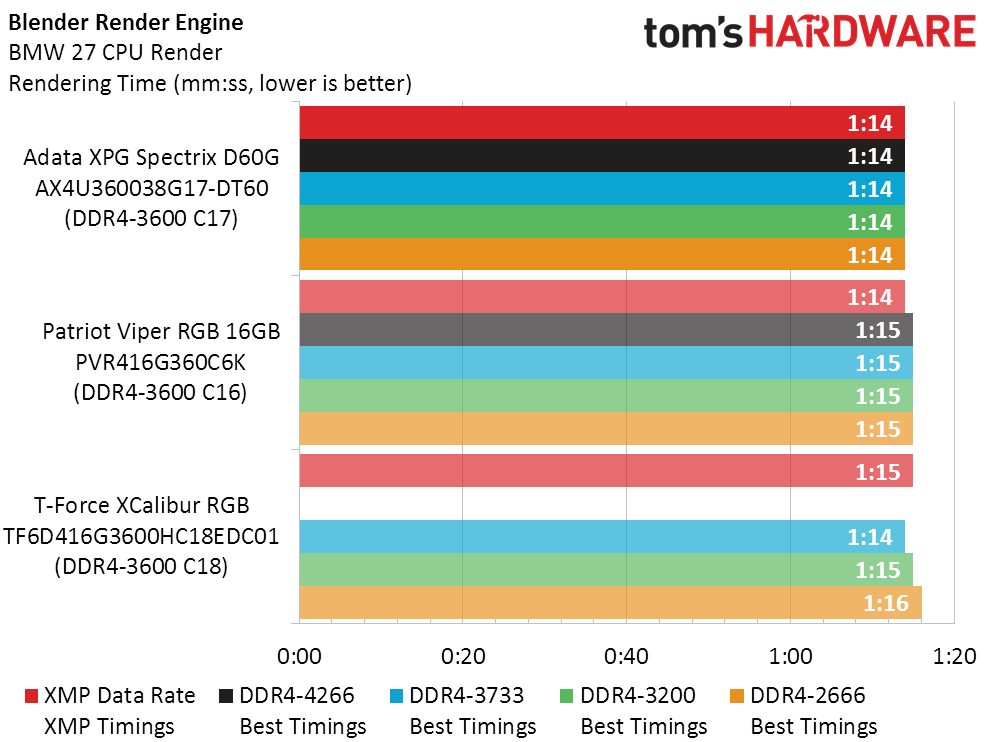

There’s little to discuss in F1 2017: Though testing at lower data rates does edge its FPS down slightly, it looks like our 4.20 GHz fixed CPU clock is applying a slight bottleneck on a configuration that we think should otherwise reach 160 FPS. Blender surprised us by showing fractional seconds that rounded down for the Adata kit and up for the Patriot kit, and Adata’s win is even easier to see in the longer-running 7-Zip compression test. Please keep in mind that less compression time means more performance.
We were really surprised to see all three kits priced similarly, but even more surprised to see the Adata kit consistently edging out the highly-performing Patriot Viper RGB. We find a value victory here, despite the D60G’s use of plastic light diffusers as “heat spreaders.” And its combination of superior performance and good price is enough to earn it four stars and an enthusiastic recommendation.
Photo Credits: Tom's Hardware
MORE: Best Memory
MORE: DDR DRAM FAQs And Troubleshooting Guide
MORE: All Memory Content
-
Crashman Reply
Well...a plastic this dense is probably AT LEAST as good as open air for this purpose.hannibal said:So plastic heat keeper! Keeps your ram warm in cold conditions :ROFLMAO:
